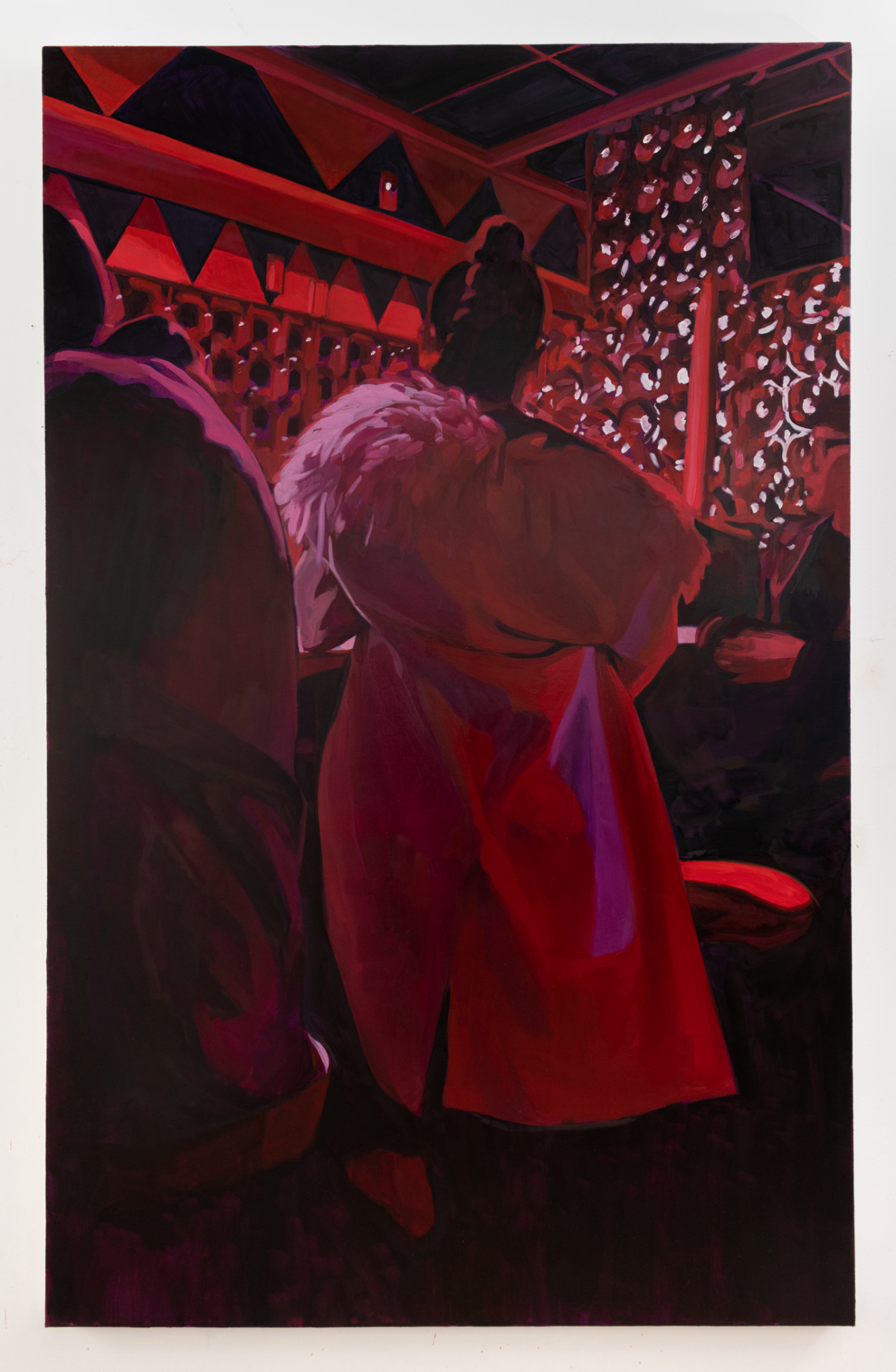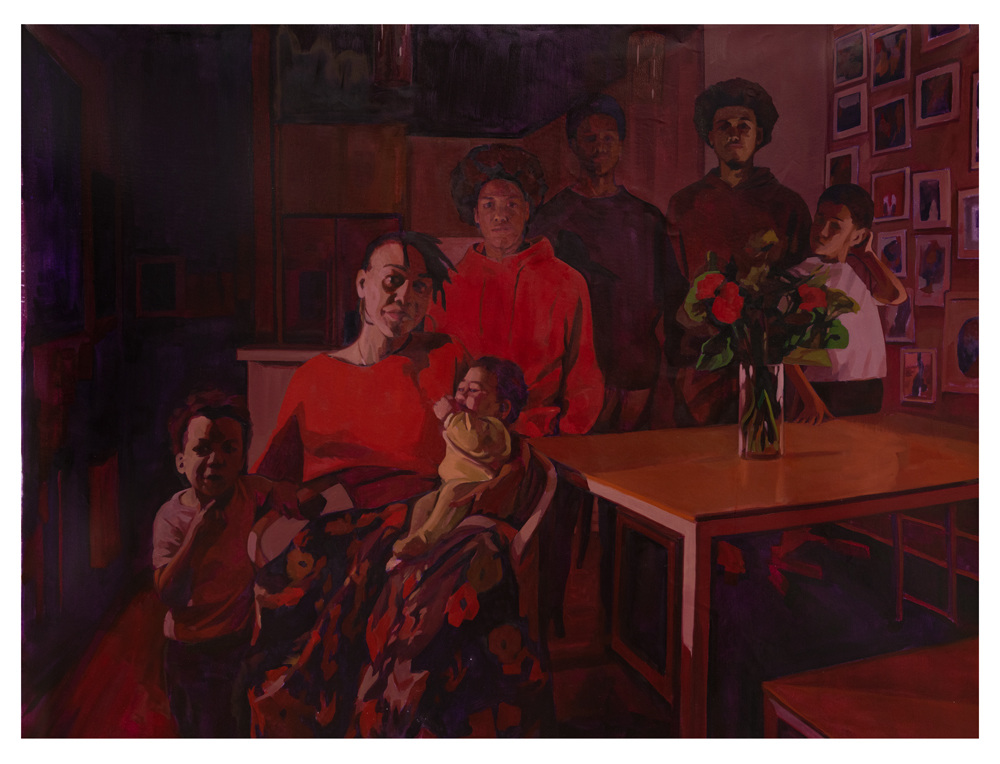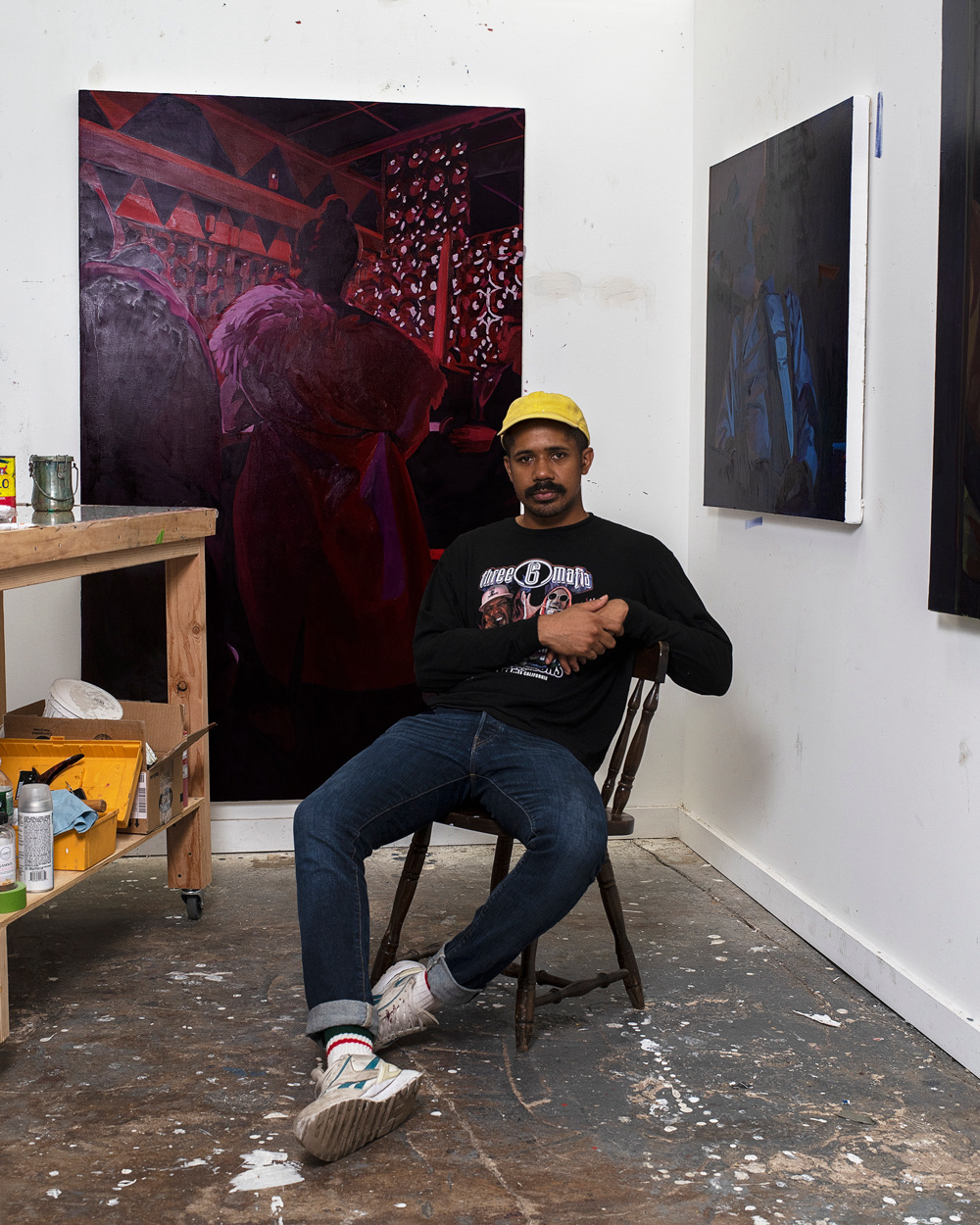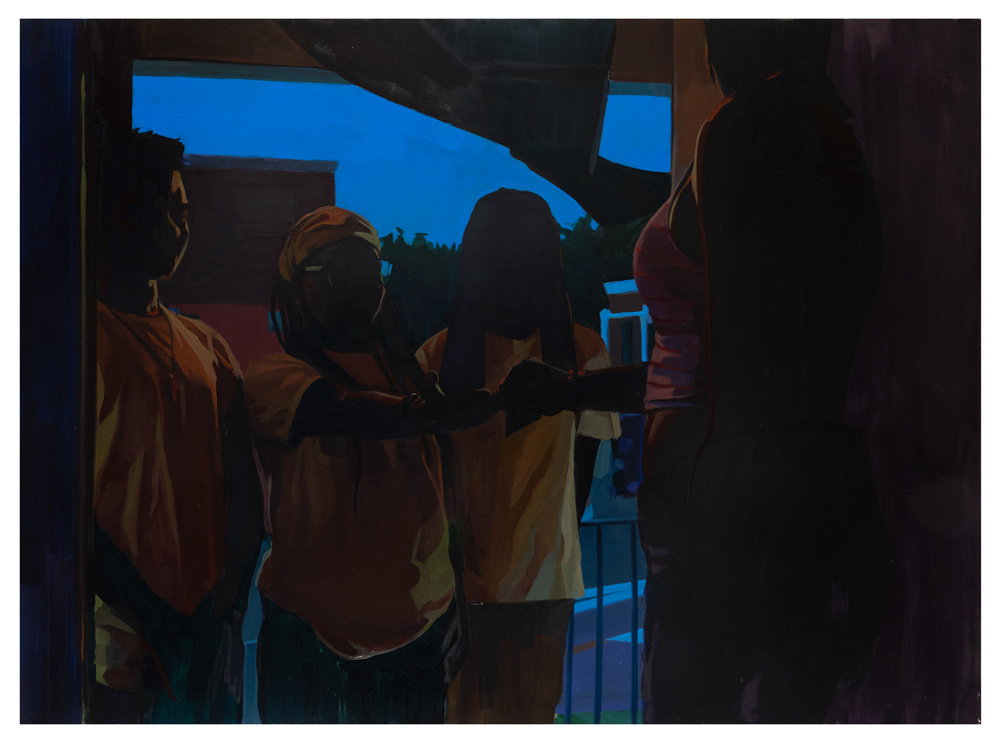What does a portrait of a family packed into a cozy kitchen have in common with a still life of a flower vase? How does a vespa on an empty city street resemble a man in a suit and tie or a drink on a candlelit table? Through the eyes of Memphis-born, Queens-based artist Kevin Brisco Jr., these unique scenes accompany one another. His upcoming New York solo exhibition, “Footsteps in the Dark,” which opens October 13 at Albertz Benda gallery, experiments with the use of liminal light to depict a variety of everyday scenes. Each of Brisco Jr.’s oil paintings are infused with a unique set of luminosity and differ in subject matter, colors, and the source of light. What bonds each together is a similar atmospheric feeling in their depiction of the transitional phase between darkness and light as well as their unique method of purchase. Brisco Jr.’s work depicts a certain intimacy, a closeness with his subjects no matter if they are portraits or set scenes. The people portrayed throughout the various portraits are, in fact, real persons whom the artist wants to share his success. Each subject of each work sold will retain a 10 percent share of any profit made from the work in perpetuity for the market life of the work. Here the artist exclusively speaks with Cultured about his artistic process, new model for art sales, and personal connection to the unique body of work.

How long have you been working on this project?
If the question is when I started this group of paintings, then April of this year at the end of my residency at the Fine Arts Work Center in Provincetown, Massachusetts. With regards to the style of painting in this show—i.e reaching for darker hues and values—I began that project in the Summer of 2019 after seeing the works of Roy DeCarava, as well as this great Henry Taylor painting The Darker the Berry, The Sweeter The Juice. My first “dark” painting was finished in fall of 2019 for my final pit crit at Yale.

“Footsteps in the Dark” gives back to its subjects through a different concept of sales. How did that come about?
A major tenet of this show is that the resale of any portrait stipulates that 10 percent of any profit from resales must go to the named subject of the painting. On the back of each portrait is a contract that names the subject, gives their information, and details the terms of my wishes with regards to resale. I’ve been working on this for quite some time, trying to figure out how the subject of a painting—which the market is so hungry to collect but is not in a rush to compensate for—can retain a financial stake in the resale of their own bodies. In my second year at Yale, I arrived at the idea of establishing the 10 percent residual model in perpetuity for the subjects of my paintings—this is what I see as my career goal.

The exhibition’s is named after an Isley Brothers song. What significance does this have in relation to your work?
The song is about trust lost between lovers, the paranoia that loss creates, but the ultimate hope to re-find each other. Outside of the direct reference to finding someone in the “dark,” the works are an act of trust. The residual resale model for the subject is drawn up on the Seth Siegelaub and Robert Projansky contract from the ‘70s used by Hans Haacke and the like to retain artist’s residuals. This contract has been deemed unenforceable under current U.S. copyright law, therefore any adherence to said agreement is an act of faith. The portrait works in this show are an act of trust between me, the subject of the work, and the collector as a steward of the works intent. To put it simply, if you're uninterested in the residual model to the subject, you do not have to buy my work. Undoing the residual promise kills the speculative value anyway. Trust and transparency are at the core of this whole exhibit.

If you were to pick one piece that best represents the essence of this entire body of work, which would it be?
I would say Bring Me My Change. It’s an allegory for the way I see generational “wealth” exchanged in working class families. A mother hands her teen children’s cash, however she needs every ounce of return on that investment because she doesn't really have it for herself. This could also be expanded to the larger generational exchange between working class parents who make hard investments in their children’s education.
“Footsteps in the Dark” is on view at Albertz Benda from October 13, 2022 to November 12, 2022, at 515 W 26th Street, New York, NY 10001.




